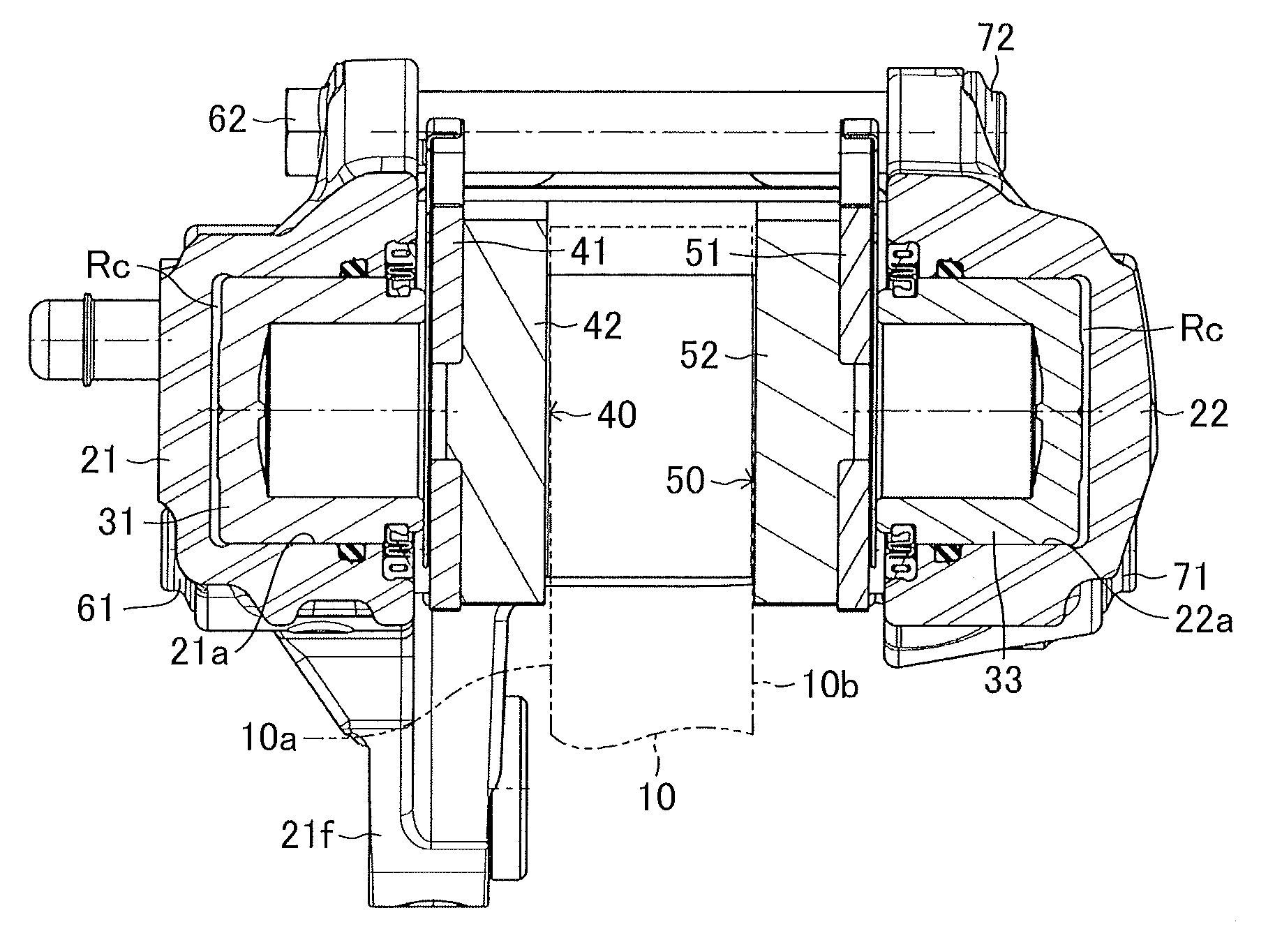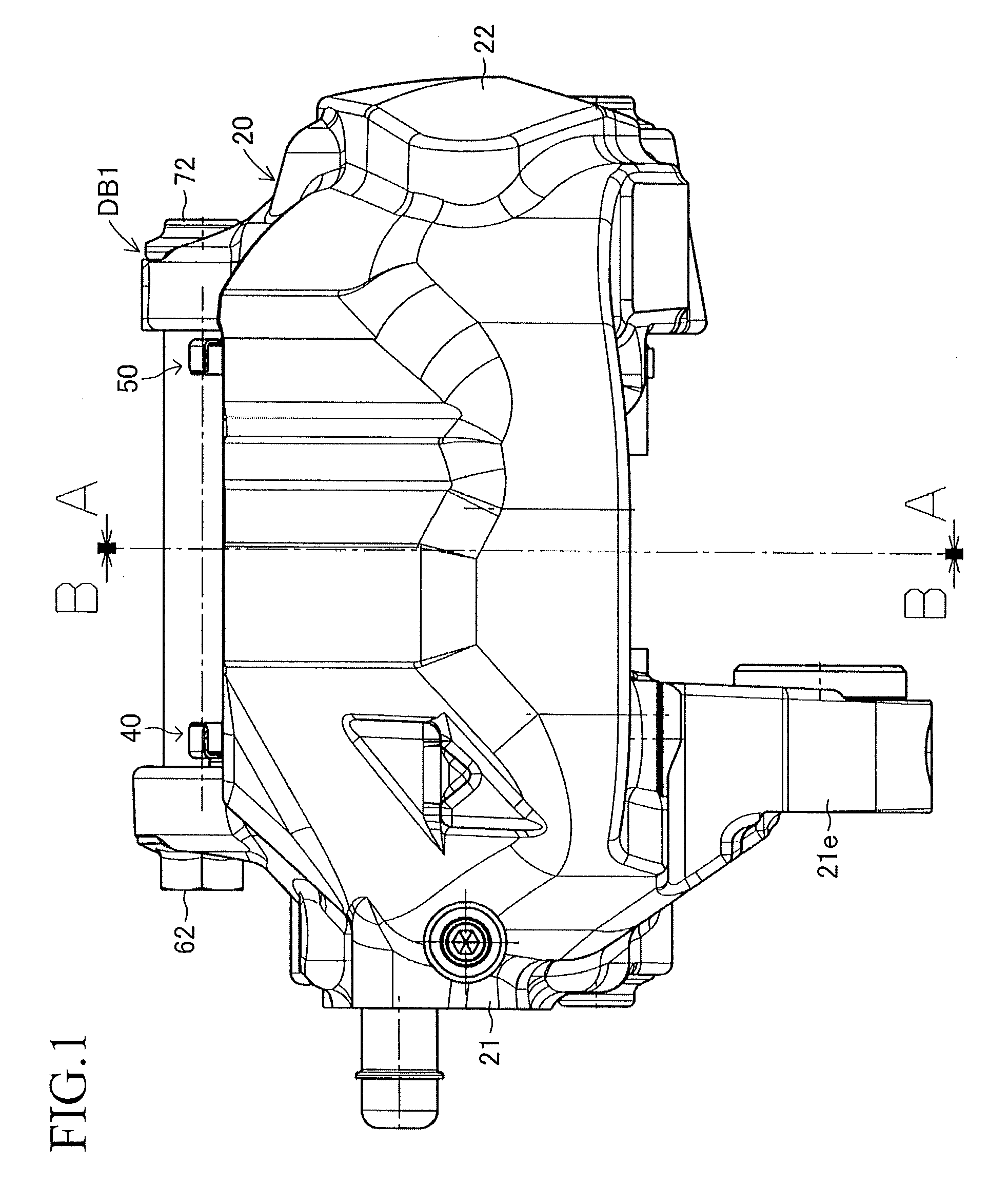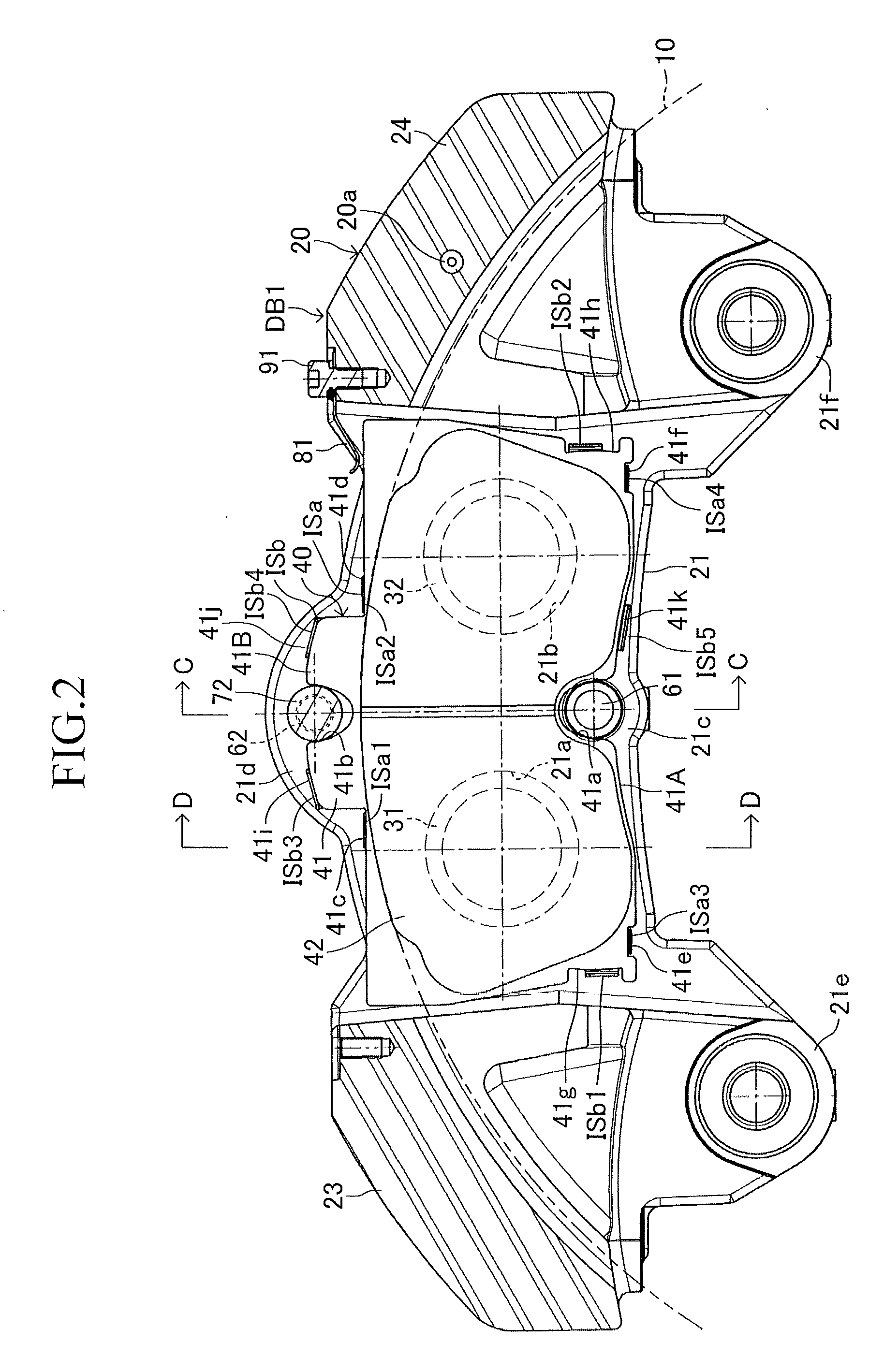Disc brake apparatus
a disc brake and disc technology, applied in the direction of braking systems, fluid actuated brakes, transportation and packaging, etc., can solve the problems of unstable brake pad behavior, brake pad unstability, associated brake noise, etc., to reduce the cost of machining, reduce the effect of brake pad noise, and stable brake pad behavior
- Summary
- Abstract
- Description
- Claims
- Application Information
AI Technical Summary
Benefits of technology
Problems solved by technology
Method used
Image
Examples
Embodiment Construction
[0030]The embodiments of the present invention will next be described with reference to the drawings. FIGS. 1 to 6 show an embodiment of the present invention embodied in an opposed-piston type (stationary type) disc brake apparatus for a vehicle. A disc brake apparatus DB1 of the present embodiment includes a disc rotor 10 which is attached to an axle hub (an unillustrated rotating member) and rotates unitarily with a wheel (not shown); a caliper 20 disposed in such a manner as to straddle a partial circumference of the disc rotor 10; four pistons 31, 32, 33, and 34 attached to the caliper 20; an inner brake pad 40; an outer brake pad 50; an inner shim ISa and an outer shim ISb attached to the inner brake pad 40; and an inner shim OSa and an outer shim OSb attached to the outer brake pad 50. The disc brake apparatus DB1 further includes an inner radially-inner support shaft 61 and an inner radially-outer support shaft 62 provided on the caliper 20; an outer radially-inner support s...
PUM
 Login to View More
Login to View More Abstract
Description
Claims
Application Information
 Login to View More
Login to View More - R&D
- Intellectual Property
- Life Sciences
- Materials
- Tech Scout
- Unparalleled Data Quality
- Higher Quality Content
- 60% Fewer Hallucinations
Browse by: Latest US Patents, China's latest patents, Technical Efficacy Thesaurus, Application Domain, Technology Topic, Popular Technical Reports.
© 2025 PatSnap. All rights reserved.Legal|Privacy policy|Modern Slavery Act Transparency Statement|Sitemap|About US| Contact US: help@patsnap.com



